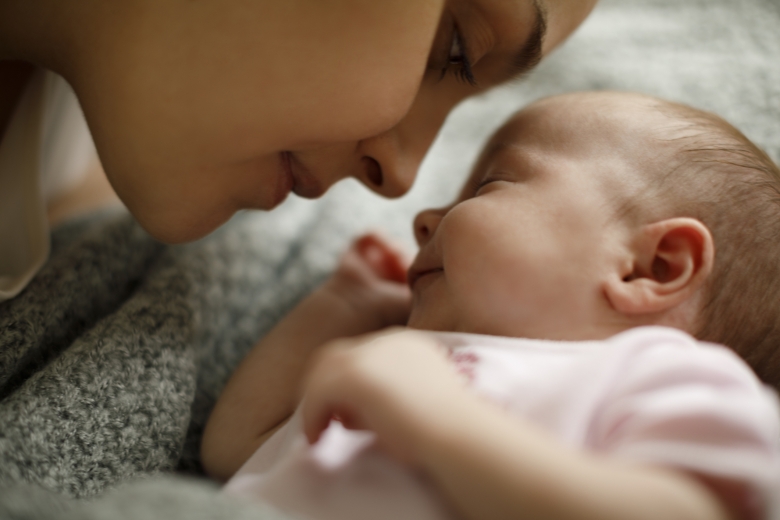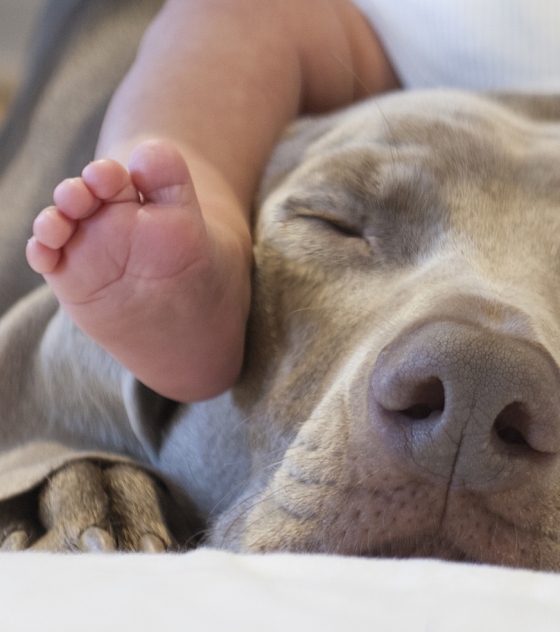How to communicate with your baby
Now they’ve been born there are numerous ways to establish a connection.

Use a few of these tips to establish a relationship that’s full of stimuli.
1. A lifetime affair.
The first thing you need to know about the mother and child relationship is that you’re going to feel very like you’re falling in love. But this is so much better, because you’ll feel so much emotion when you see them for the first time. It’s hard to explain if you haven’t experienced it, or cradled a baby in your arms. So if you haven’t seen each other yet... Get ready for an explosion of love. For tears (everyone) and joy (yours).
2. The best place for them is snuggled up to you.
Your first cuddle brings them up to your chest, and they will hear your heartbeat, and recognise your voice and smell. That’s non-verbal communication. And it’s enough for them to start feeling safe. They may keep their eyes open, look expectant, and gradually become calmer. And they might cry! If you talk to your baby, you’ll help them feel that they are in the best possible place. Oxytocin is the hormone responsible for maternal behaviour. And it’s secreted in large volumes during that long cuddle.
3. Skin-to-skin is a great invention.
Just look at how happy it makes you. The kangaroo or skin-to-skin method allows new-borns to feel comfortable and secure, and parents (even grandparents) to get emotionally close to our baby, to learn how to handle them and to become familiar. Experts believe skin-to-skin contact induces normal sleep cycles and a state of calm.
4. Crying is communicating...
Just not how we’d like it. Babies cry because they don’t feel safe, or because they are calling for attention. Which might both mean the same thing. Numerous experts recommend paying attention to babies when they cry. We’ll talk about this in a little more depth later, but your instinct will certainly push you to go over to them. So listen to your instinct. Pick them up, look them in the eyes and talk to them sweetly. Raising children isn’t an easy task and you may be tired, but it’s the best answer you can give. And if they’re calm and awake, why not go over, look them in the eyes and talk to them?
5. Tell them things, they will listen to you.
OK, they’ll listen to the best of their ability as they still have a long way to go before they can acquire language. But talking stimulates their attention. If you say things like “Now let’s get changed and go out for a walk,” or “My goodness you’re hungry! Alright, it’s time to eat... but then let’s try and sleep,” you’re already communicating. Do it as often as you can.
6. Gestures count.
Even though babies can’t use words, that doesn’t mean they can’t talk to you. They will use spontaneous gestures and your closeness will allow you to know what they mean. They will end up imitating your facial movements and sounds. Play “Where’s baby’s nose, ears, mouth” and “Let’s make people quiet by going sshhhh”. Babies start to communicate using signs somewhere between eight and twelve months, as this helps them to communicate the ideas they cannot express in words. They’ll soon start babbling and using symbolic sounds like ‘Woof woof’ for dog or ‘Meow’ for cat. Remember that it’s good to listen before you speak. Good advice for adults is good advice for babies too.
Make the most of any opportunity to talk to, touch and look your baby in the eyes. It will help you for their entire life. Remember you fell in love with them at first sight.





